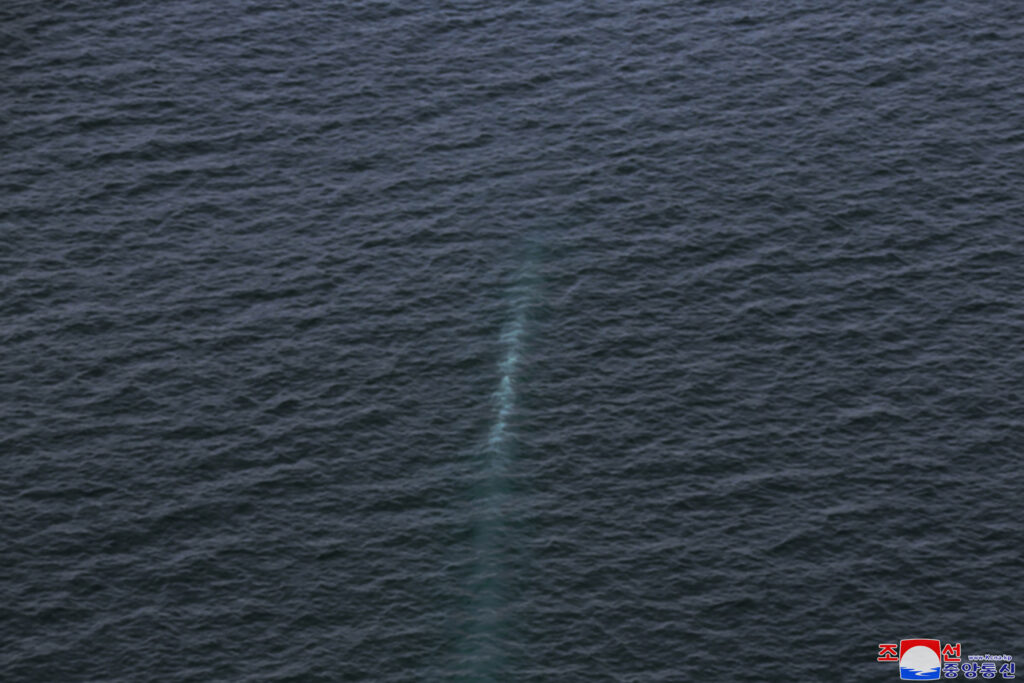
- ARAB NEWS
- 05 May 2024

Tokyo: North Korea fired two short-range ballistic missiles into the Sea of Japan on Wednesday morning, the South Korean military said.
The missiles were fired from an area around Pyongyang’s Sunan Airport at around 3:30-46 a.m.
According to the Japanese Defense Ministry, the missiles dropped outside Japan’s exclusive economic zone.
It was the first time for North Korea to fire a missile since July 12, when the country launched the new Hwasong-18 intercontinental ballistic missile.
Pyongyang conducted the latest missile launches apparently in protest against the first meeting of the U.S.-South Korea Nuclear Consultative Group in Seoul on Tuesday to discuss ways to strengthen nuclear deterrence and the entry of a U.S. strategic nuclear submarine into Busan in southern South Korea on the same day.
Japanese Defense Minister Yasukazu Hamada told reporters that the two North Korean missiles fired on Wednesday may have flown on irregular trajectories, making them difficult to intercept.
The missiles are believed to have both reached altitudes of up to about 50 kilometers. They are estimated to have traveled some 550 kilometers and some 600 kilometers, respectively.
The ICBM fired on June 12 travelled about 1,000 kilometers and reached an altitude of up to 6,000 kilometers. It was apparently designed to target the U.S. mainland.
The short-range missiles launched this time are believed to be aimed at placing Busan within range to demonstrate North Kore’s capability to attack the port being called at by the U.S. strategic nuclear submarine, pundits said.
Japanese Prime Minister Fumio Kishida, while flying back home on a government aircraft after a tour of Middle Eastern countries, instructed government officials to gather and analyze information about the latest missile launches, check the safety of aircraft and ships, and take all possible measures to prepare for contingencies. He received reports on the missile firings from his secretary on the government plane.
The launches were “utterly unacceptable as they threatened the peace and safety of our country and the region,” Kishida told news reporters at the prime minister’s office in Tokyo after returning from the trip.
“We will reaffirm cooperation between Japan and the United States, as well as among Japan, the United States and South Korea, and make all-out efforts to ensure the safety and security of people in Japan,” he also said.
The Japanese government brought together related information at a response office set up at the crisis management center of the prime minister’s office. A meeting of an emergency task force of bureau chief-level officials from relevant government ministries and agencies was convened to discuss how to deal with the latest development.
The Japanese government made a protest to North Korea through diplomatic channels. The South Korean military also denounced it as a clear violation of U.N. Security Council resolutions and called on Pyongyang to halt its military provocations.
At a press conference, Japan’s Chief Cabinet Secretary Hirokazu Matsuno said that there had been no reports of damage to aircraft or ships from the missiles.
In a statement released on Monday, Kim Yo Jong, North Korean leader Kim Jong Un’s sister and a Workers’ Party of Korea executive, criticized the NCG meeting and the U.S. nuclear submarine’s port call in South Korea, and hinted at further provocation, saying that the July 12 ICBM launch was the beginning of a military campaign.
JIJI Press